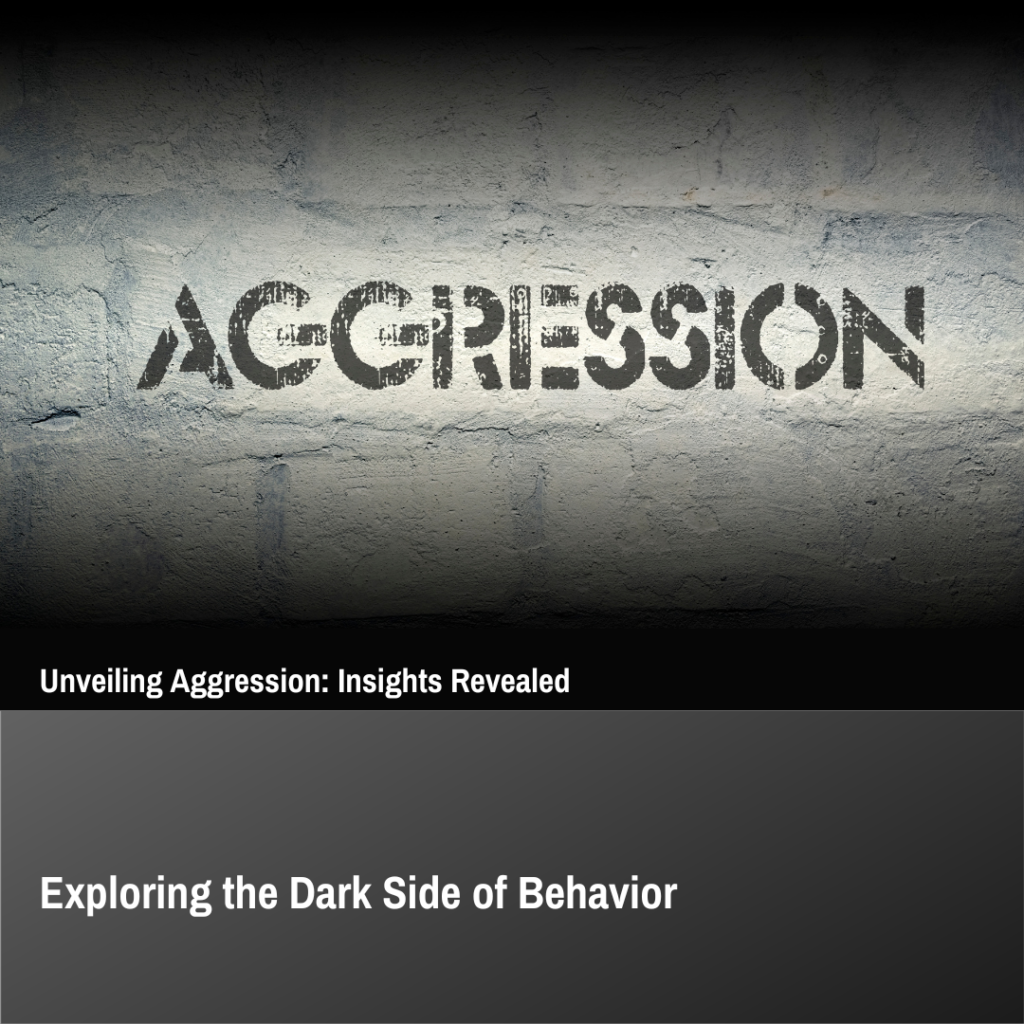Understanding Aggression and Violence
Introduction
Aggression and violence are pervasive issues that affect individuals and societies worldwide. Understanding the roots and manifestations of these behaviors is crucial for developing effective prevention and intervention strategies. At ivyleagueassignmenthelp.com we help and guide students to guide explores the psychological, social, and biological factors contributing to aggression and violence, examines various types and contexts, and offers insights into managing and mitigating these behaviors.

Defining Aggression and Violence
Conceptual Framework
- Aggression: An overview of aggression as behavior intended to harm or injure another person.
- Violence: Differentiating violence as a form of extreme aggression resulting in physical harm or damage.
- Types of Aggression: Hostile, instrumental, relational, and verbal aggression.
Psychological Perspectives on Aggression
Theories of Aggression
- Biological Theories: Genetic, neurological, and biochemical influences on aggression.
- Psychodynamic Theory: Freud’s perspective on aggression as an innate drive.
- Behavioral Theories: Learning aggression through reinforcement and modeling.
- Social Learning Theory: The impact of observing and imitating aggressive behaviors.
- Cognitive Theories: The role of thought processes and perceptions in aggressive behavior.
- Frustration-Aggression Hypothesis: The link between blocked goals and aggression.
- General Aggression Model (GAM): An integrative framework combining multiple factors.
Social and Environmental Influences
Family Dynamics
- Parental Behavior: The impact of parenting styles and domestic violence.
- Sibling Relationships: Aggression among siblings and its long-term effects.
- Family Environment: The role of family conflict and stress.
Peer Influences
- Bullying and Peer Aggression: Forms and effects of peer-related aggression.
- Gang Violence: The dynamics and consequences of gang-related aggression.
- Social Rejection: The link between rejection and aggressive behavior.
Cultural and Societal Factors
- Media Influence: The effects of violent media on aggression.
- Cultural Norms: How cultural attitudes towards violence shape behavior.
- Economic and Social Inequality: The impact of socio-economic disparities on violence.
Types and Contexts of Violence
Domestic Violence
- Intimate Partner Violence: Forms, causes, and effects of violence in intimate relationships.
- Child Abuse: Physical, emotional, and sexual abuse of children.
- Elder Abuse: The mistreatment of older adults.
Community Violence
- Street Violence: Causes and consequences of violence in public spaces.
- Hate Crimes: Violence motivated by prejudice and discrimination.
- Terrorism: Understanding the motivations and impacts of terrorist violence.
Institutional Violence
- Workplace Violence: Forms and prevention strategies for aggression in the workplace.
- School Violence: Bullying, school shootings, and preventive measures.
- Prison Violence: Aggressive behavior in correctional settings.
Biological and Genetic Factors
Genetic Predispositions
- Heritability of Aggression: Genetic influences on aggressive behavior.
- Gene-Environment Interaction: How genetics and environment together shape aggression.
Neurological Factors
- Brain Structures: The role of the amygdala, prefrontal cortex, and other brain areas.
- Neurotransmitters and Hormones: Influence of serotonin, dopamine, and testosterone.
Intervention and Prevention Strategies
Individual-Level Interventions
- Cognitive-Behavioral Therapy (CBT): Techniques for reducing aggressive behavior.
- Anger Management: Strategies for controlling and expressing anger constructively.
- Medication: Pharmacological approaches to managing aggression.
Family-Based Interventions
- Parenting Programs: Training parents in non-violent discipline and conflict resolution.
- Family Therapy: Addressing family dynamics contributing to aggression.
Community and Societal Approaches
- Education and Awareness Campaigns: Promoting non-violence and conflict resolution.
- Youth Programs: Engaging at-risk youth in positive activities.
- Policy and Legislation: Laws and policies aimed at reducing violence.
Creating Safe Environments
School Safety
- Anti-Bullying Programs: Strategies to prevent and address bullying.
- Crisis Intervention: Plans and procedures for handling violent incidents.
- Promoting a Positive School Climate: Fostering respect and inclusivity.
Workplace Safety
- Violence Prevention Policies: Guidelines and training for preventing workplace violence.
- Support Systems: Resources for employees affected by violence.
- Conflict Resolution Programs: Mediation and negotiation strategies.
Community Safety
- Neighborhood Watch Programs: Community involvement in crime prevention.
- Urban Design: Designing safer public spaces to reduce opportunities for violence.
- Law Enforcement and Community Relations: Building trust between police and communities.
Conclusion
Addressing aggression and violence requires a multifaceted approach that includes understanding the underlying causes, implementing effective interventions, and fostering environments that promote non-violence. By integrating individual, family, community, and societal strategies, we can work towards reducing aggression and building safer, more harmonious communities.
FAQs
What are the main types of aggression?
The main types of aggression include hostile aggression, which is driven by anger and aims to cause pain; instrumental aggression, which is goal-oriented and used as a means to an end; relational aggression, which harms social relationships; and verbal aggression, which involves harmful language.
How does media exposure influence aggressive behavior?
Exposure to violent media can desensitize individuals to violence, increase aggressive thoughts and behaviors, and reinforce aggressive norms. However, the impact varies based on individual susceptibility and environmental factors.
Can aggression be inherited genetically?
There is evidence that genetics can predispose individuals to aggression, but it is typically the interaction between genetic predispositions and environmental factors that determines aggressive behavior.
What are some effective ways to manage anger and reduce aggression?
Effective ways to manage anger and reduce aggression include cognitive-behavioral therapy, anger management programs, mindfulness and relaxation techniques, and developing better communication and conflict resolution skills.
How can schools prevent and address violence?
Schools can prevent and address violence by implementing anti-bullying programs, promoting a positive and inclusive school climate, having clear policies and procedures for handling violent incidents, and providing support systems for affected students.
What role does economic inequality play in community violence?
Economic inequality can contribute to community violence by creating environments of stress, frustration, and competition for limited resources. Disparities in wealth and opportunities can lead to increased tension and conflict within communities.
